Stories from Crete Greece: Nice news from Greece: Crete at its best: On this page we write about news from Crete Greece; true stories of what is happening here, which we like to share with you! This way you get some idea of the culture and traditions of Crete.
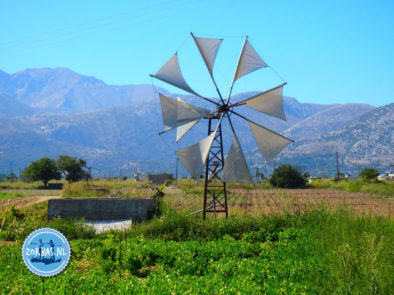
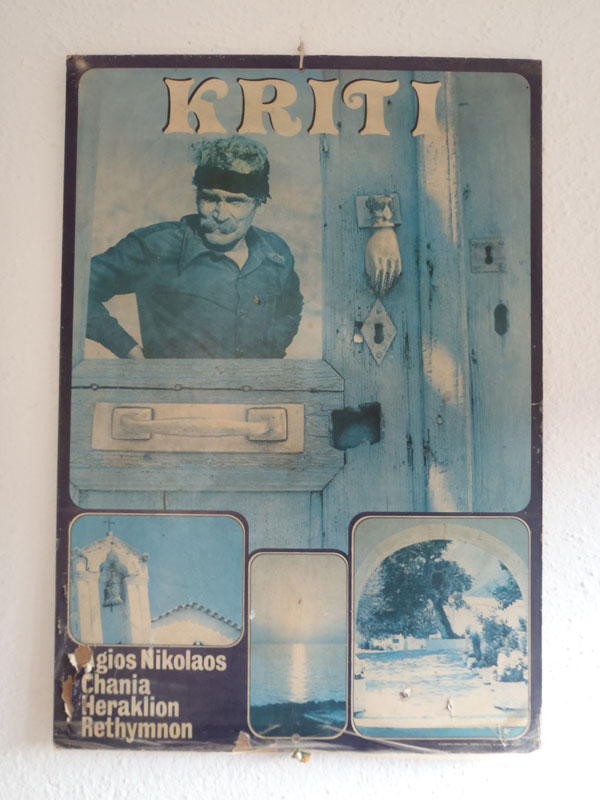
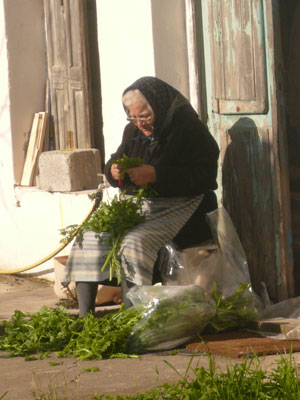
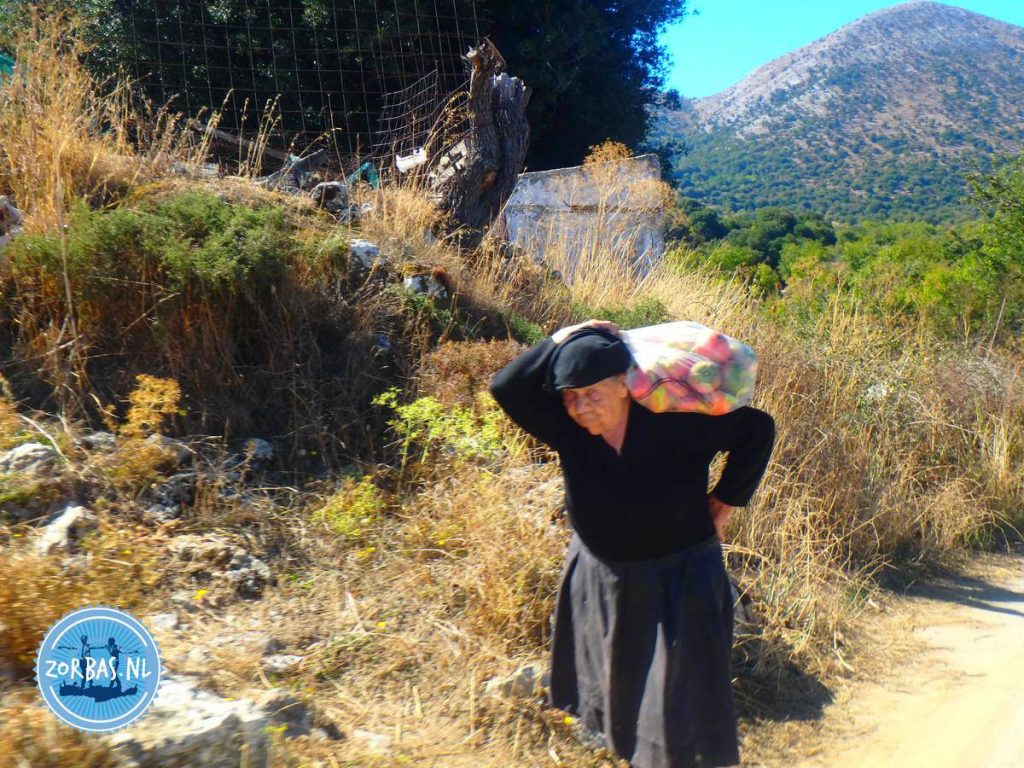
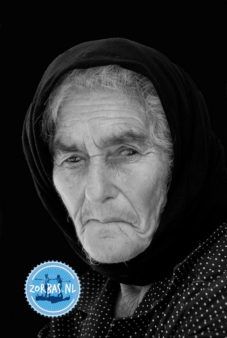
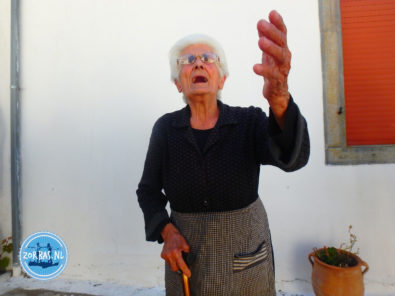
Baptism celebration on Crete: Many people baptise their children around Christmas. In general there are many baptisms and weddings around Christmas in Crete. We also went to a christening yesterday, which was a nice ending after a long Christmas week! Brrr, it’s pretty cold for children to have to take a bath in the church! Afterwards we went to the party in Rogdia. Great food and live Greek music, it’s always nice to see even the smallest children know the Greek dances.
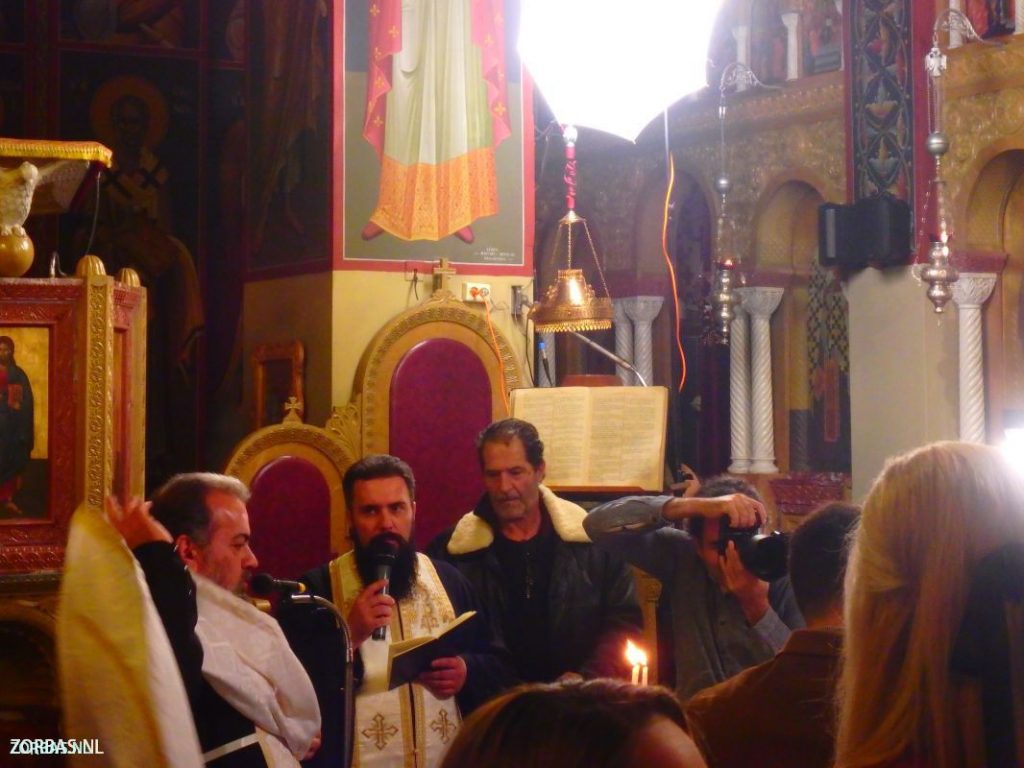
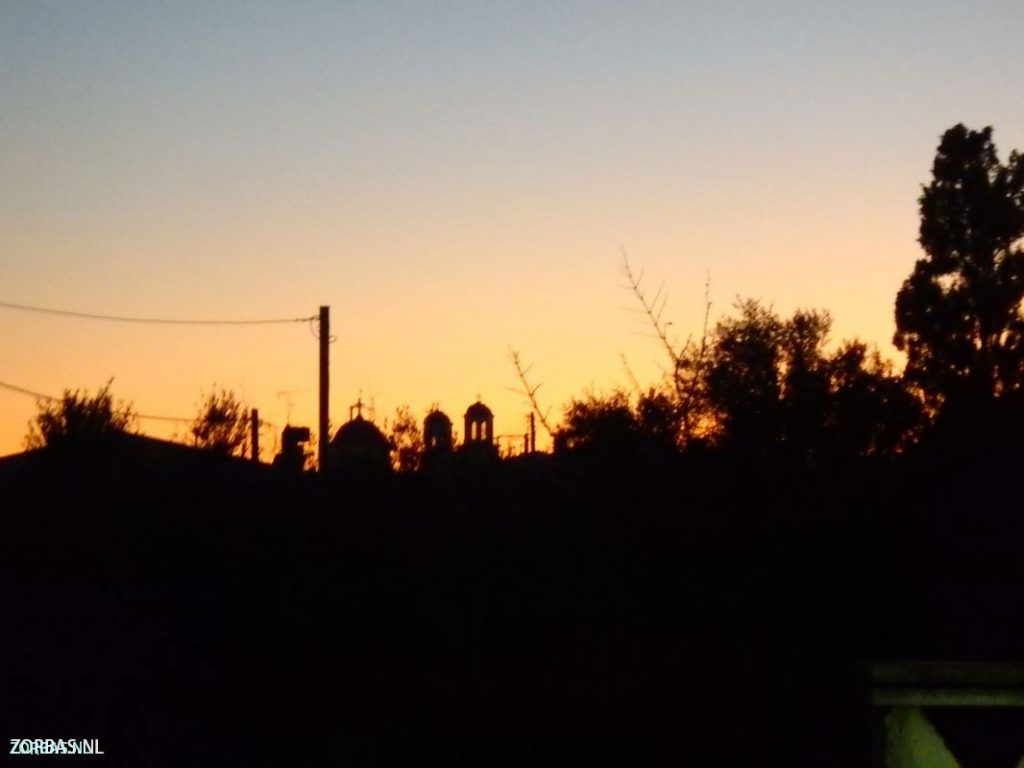
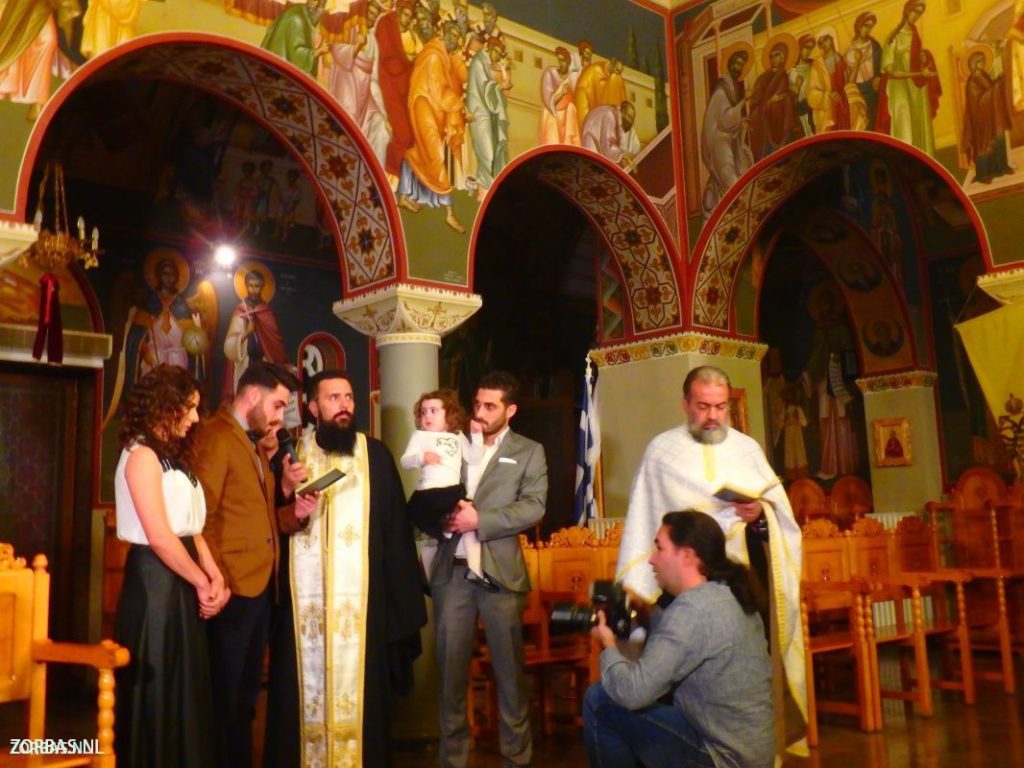
Kalderimis on the Greek islands: These are ancient connections paths between villages, from the time when there were no asphalt roads yet. Kalderimis are actually donkey paths going from the one village to the other. These paths are only 80 centimeters wide, but that used to be wide enough for transport with a donkey. In ancient times it was the only connection across the island. These paths are sometimes thousands of years old. Just imagine the farmer who had to walk from the mountain village to the capital Heraklion; a donkey with a load of 150 kilograms could walk about 25-30 kilometres a day. It was almost like a trip around world in those times. Now you can enjoy the nature and tranquility walking these unknown paths.
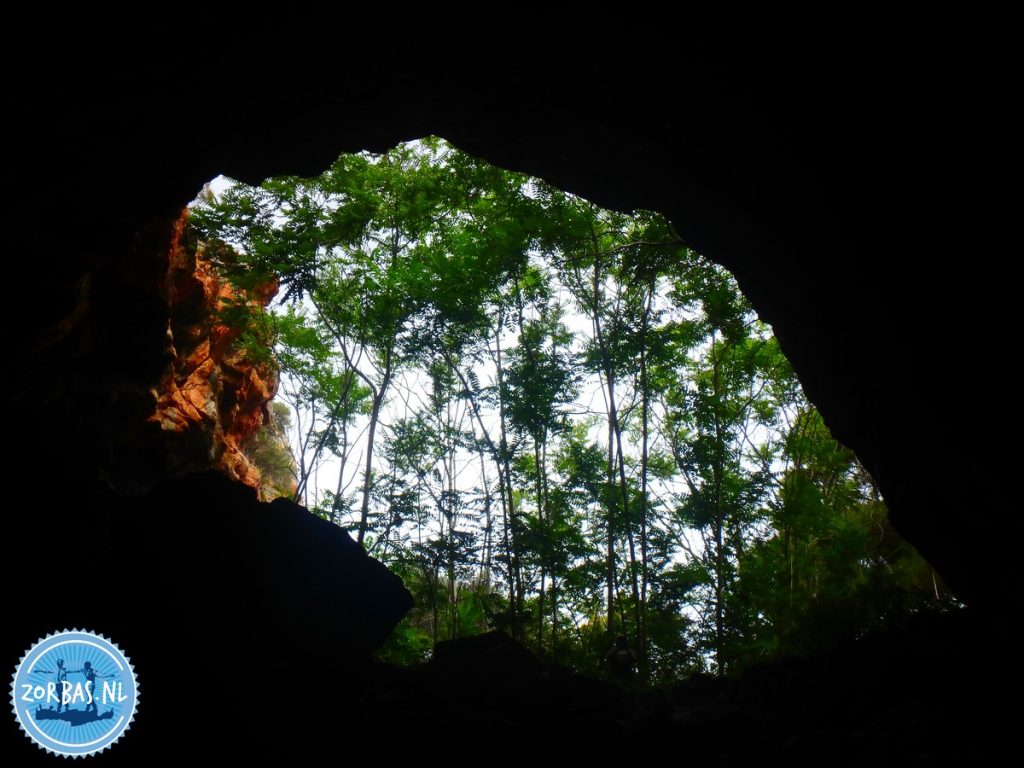
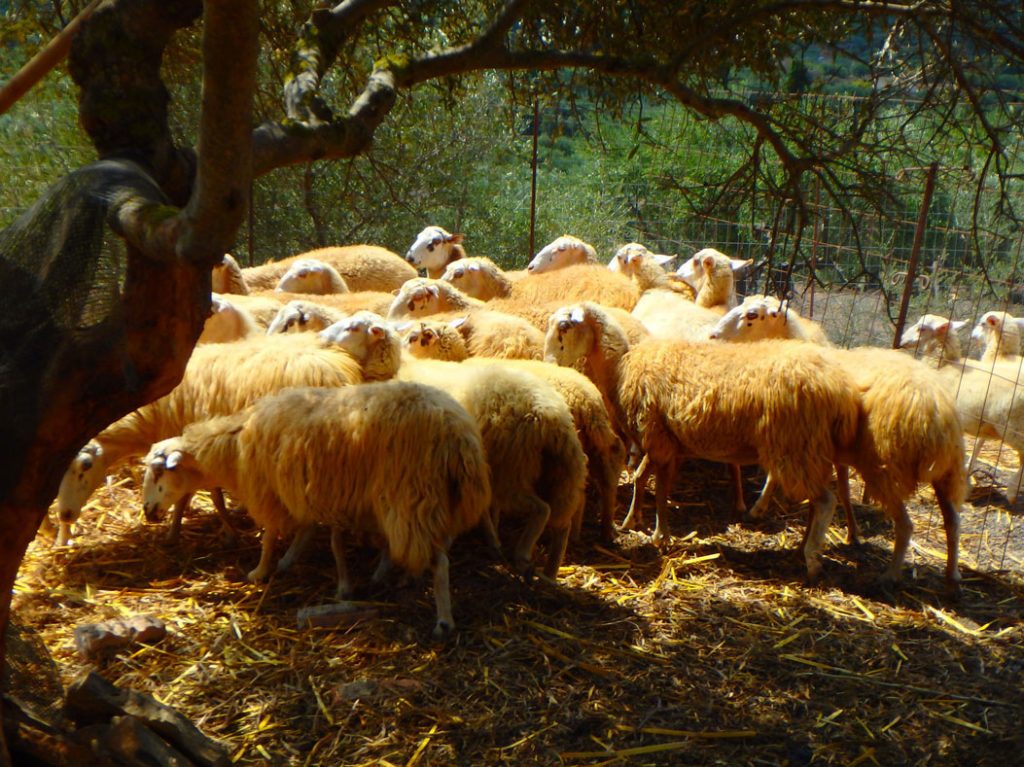
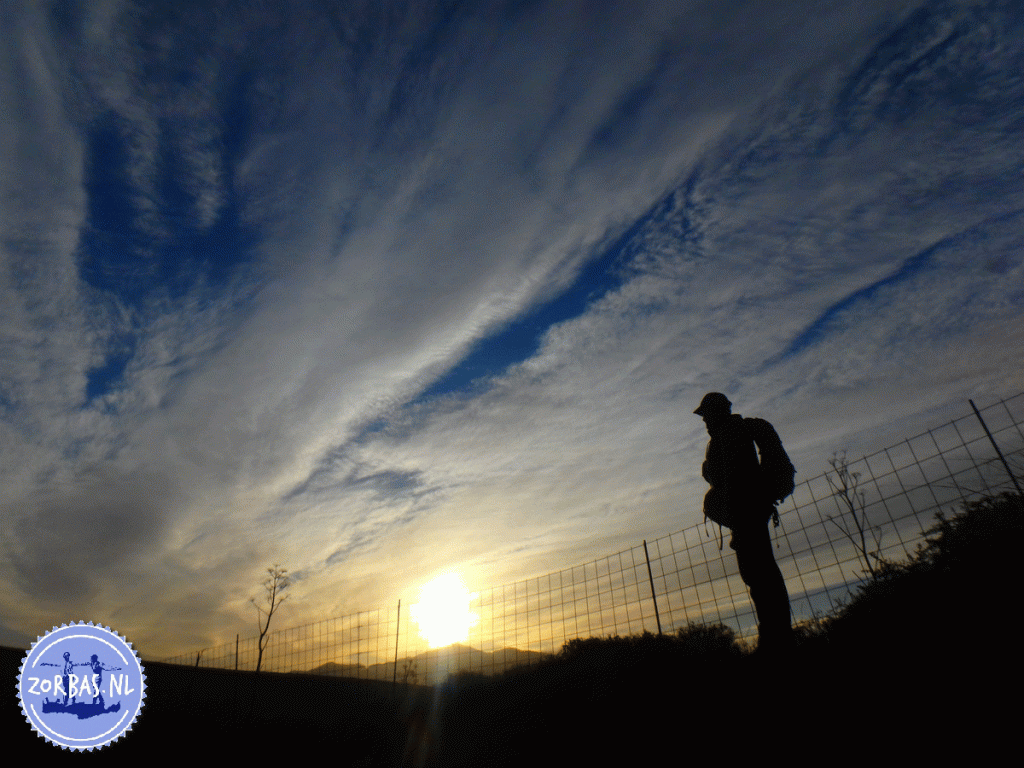
Stories from Crete Greece – Just an early morning in November
Crete at its best, simply amazing: For over 15 years I have been living on Crete now. Although the day to day habits and traditions of my little island are quite well known to me, sometimes I still find myself in the ‘What the hell?’ or ‘Simply amazing!’ situation. Like about 2 years ago, when I had an experience of the ‘simply amazing’ kind.
A nice encounter
It was a crispy November day with the sun peeping out in the upper left corner of a straight blue sky. I was driving along, taking my time, to an appointment I had in the city. My road led me through a bit of rough nature passing many olive groves when I saw a strange dark spot moving quaintly in the distance. As I came closer I realised the spot was a little old lady, dressed in black, with a humongous stack of wood on her back.
Well, relatively humongous since she couldn’t be more than 1 meter 50 and walked crouched with her nose almost at knee height to keep her balance. Right there I stopped my car and asked the lady what she was doing. ‘I’m gathering wood for my stove, my boy, it’s getting cold you know’ she answered. The accompanying smile gave me a broad view of all of her 2 ½ teeth. ‘Well, where do you need to go?’ I just had to know, it bloody well could’ve been my grandmother.
A long walk home
With a crooked finger she pointed straight toward the top of the mountain. It must have been at least a 5 kilometer hike. ‘Come on’ I said, ‘we’ll throw the wood in my trunk and I’ll take you home’, I had some time to spare anyway. Could we maybe take the other bundle she had left behind as well. Sure. After a 10 minute walk through the olive grove we came to a pile of neatly stacked branches, if possible even bigger than the first one.
Unbelievable, she was going to take all of that home on foot. The trunk just about closed so we went on our way. During the drive to her home she told beautiful stories about her olive grove being in the family for generations and how she was looking forward to the upcoming harvest. Her children and grandchildren lived in the city and were going to visit her during the olive picking season, like they did every year. The sudden luster in her eyes showed the importance of this tradition.
Greek hospitality
The village was nothing out of the ordinary. Small, typical Cretan with narrow white alleys, abandoned and ruinous little houses, a kafenion (Greek coffee shop) and, of course, 2 churches. ‘Here we are’ she squeaked as we held in front of an unlocked old wooden door. I wanted to say goodbye to her, but there was really no way. She insisted. I had to come in for a drink. The sharp odor of the Zomba (woodstove) tingled my nostrils as I followed her in to the tiny living room.
My hostess started running around like a busy little bee. She must have been way in her eighties, but she went round that little house with the speed of light, unbecoming of her age. Wine was poured and cheese was cut. The old clock above the sofa struck 2 o’clock. This ignited her again as she went to the kitchen and returned with plates of walnuts, tomato, cucumber, you name it.
Food and drinks
We chit chatted about her life, her children and grandchildren. Her heavy dialect added a level of charming difficulty to the conversation. It was about time so I tried to get up. Ochi Ochi, she yelled with her right eye at the clock and put me back in my seat with a surprisingly firm push, you have to eat! The glass was refilled and she now presented me with a steaming plate of goat meat and rice. On the couch next to her I had noticed an old box that once must have been beautifully decorated with some intricate pattern out of gold paper.
She took her ‘treasures’ out, one by one, accompanying each and every one of them with a story or anecdote. Lovely pictures that showed the history of her whole family. A tear trickled down her cheek as she showed me a family portrait from the early 30’s. Resigning herself to her past she put the pictures back in the box. It had gone half past three now, so I really had to go and gave it one more shot. As she threw another look at the clock I was finally allowed to leave. With a big hug I said my goodbyes and turned the car.
On the way back
While I took the same, curvy, steep path back down the mountain, I realized how long that road actually was. It would have taken the old lady at least an hour and a half to walk to her house had I not taken her. An hour and a half. The coin dropped. All that looking at her clock: she had just given back the time I saved her by offering food, drinks and an overwhelming hospitality. And I couldn’t help but say out loud: ‘Simply Amazing’… Crete at its best!
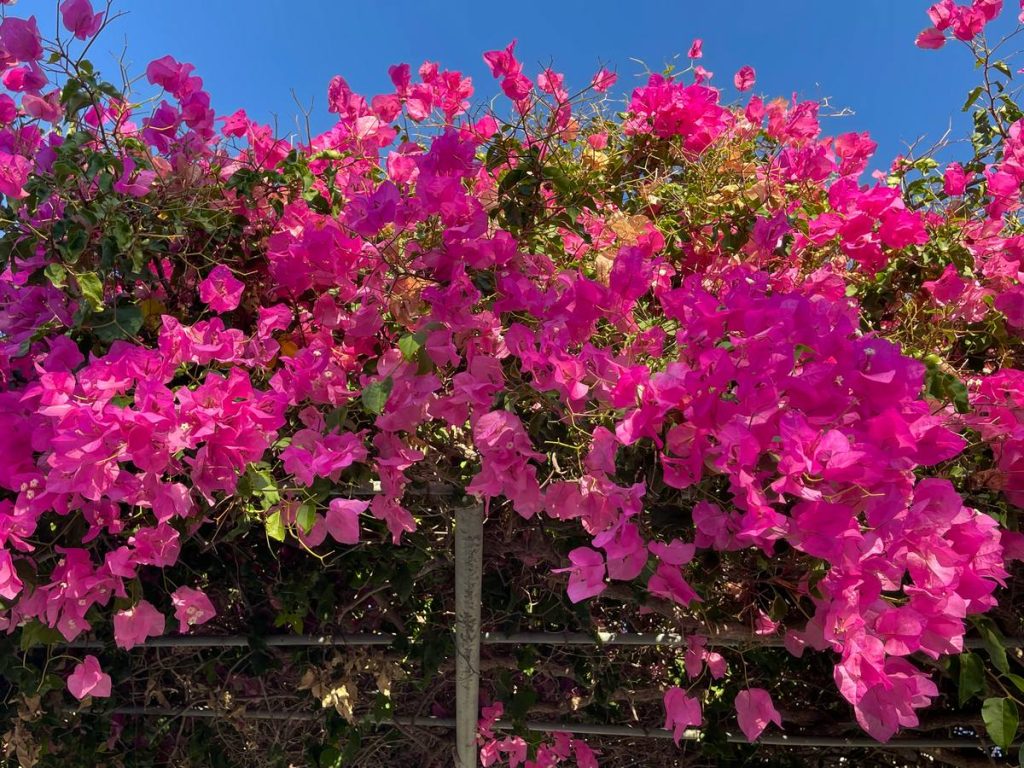
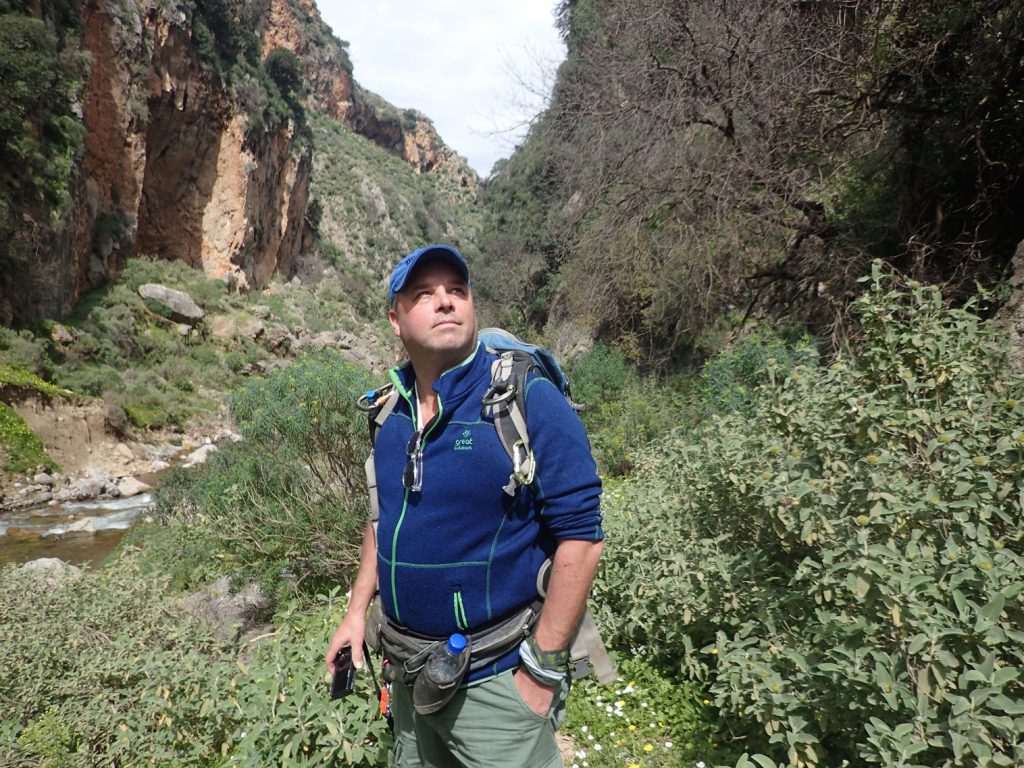
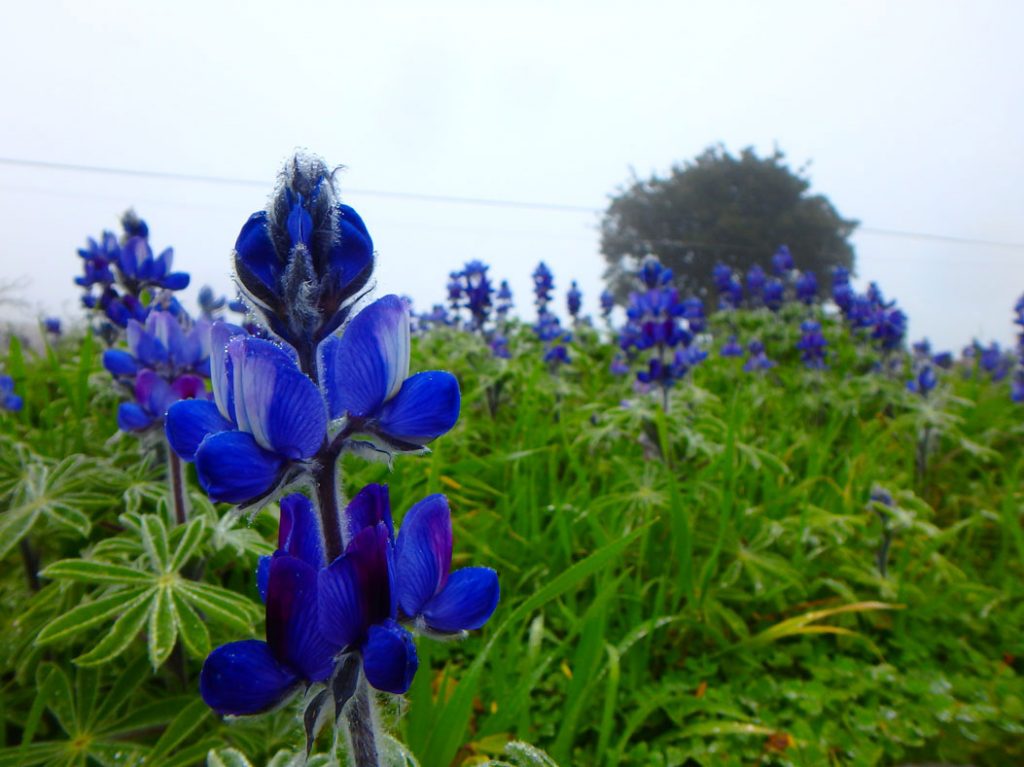
Stories from Crete Greece – Traditional crafts
Central Crete: We drive through the countryside of Crete to Mount Ida over the typical mountain roads. These are no routes where you encounter a lot of people! We immediately recorded this route on the GPS, so maybe we can make someone happy in the summer with this trip. The trip is great at this time of year: beautiful scenery, lovely weather and above us white snow peaks of Mount Ida (2456 meters high). The temperature in the mountains varies enormously: in one place it is 22 degrees, a little further it is only 3…. Of course the altitude is causing the differences, but still, on the coast it is weather for the beach.
We visited many villages during this Christmas trip: Krousonas, Tillisos, Agios Mironas, Daphnes, Venerato, Kato Asitis, Prinas, Agios Thomas, Gonies, Anogia, Nida Plateau, Petrokefalo, Stavrakia, Kato Kalesia. Each village has its own atmosphere and always with a church and a Greek Kafenion (coffee house) in the center. The idyllic looking villages and the green nature are making the trips really worthwile this time of the year. It does not really feel like winter, because of the temperature and green nature make it feels more like spring. In all the place we stop for a coffee they give us home-baked Christmas cookies, the only reminder of winter…. What a joy!
Bells for the sheep and goats
Hand-made bells for goats and sheep and traditional crafts in Crete: These crafts are still in Crete. The making of bells for the sheep and goats is still done the old-fashioned way. We go to a place where you can see that this manual labor still exists in Europe! We visit somebody who makes all the bells himself. Luckely he has a lot of work, since there are so many sheep and goats on Crete. After a glass of local Raki, it is time to continue our tour on the mountain roads of the Ida Mountains.
Olives from Crete
Harvesting olives on Crete: Throughout this time of year it is busy in the mountains, everyone is helps harvesting the olives. Nice to see together with our guest in winter. It is always an intensive job, but everybody helps with joy to get to job done. With great care the bags are filled with olives en with the old branches from the tree the fire for lunch is lit. Every day, the harvested olives are brought to the factory. Each village has an olive press, where you can just walk in to see how the olive oil is produced. Too bad that so many people only come in the summer to Crete, while the winter months are so beautiful and special.
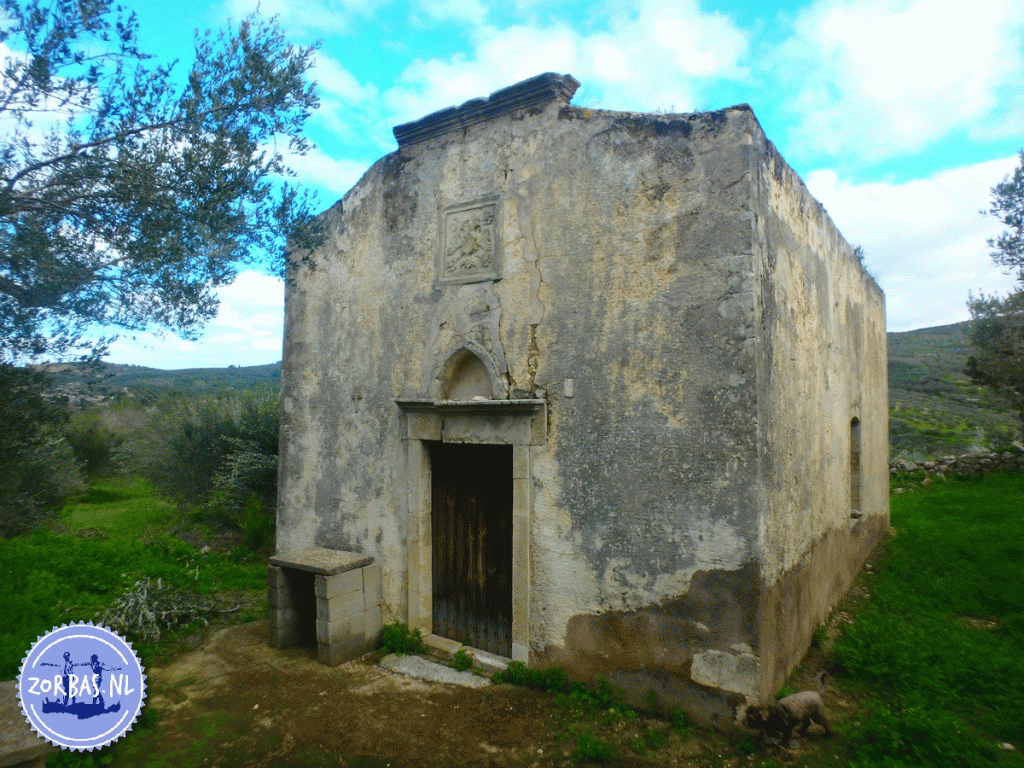
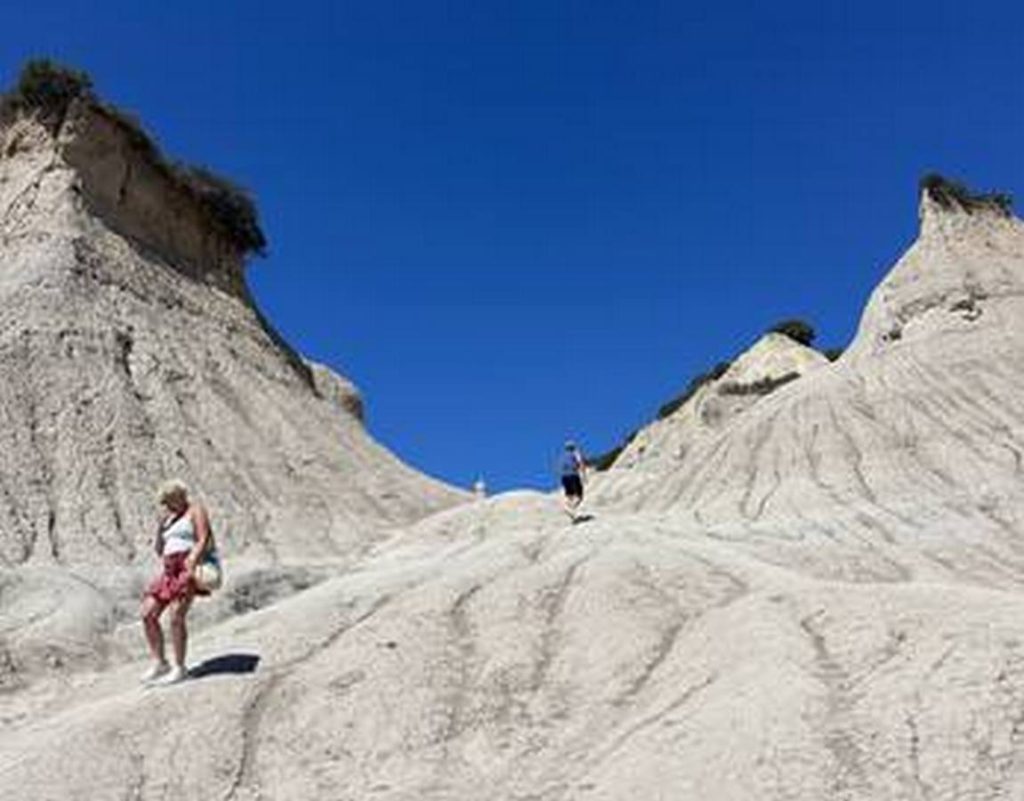
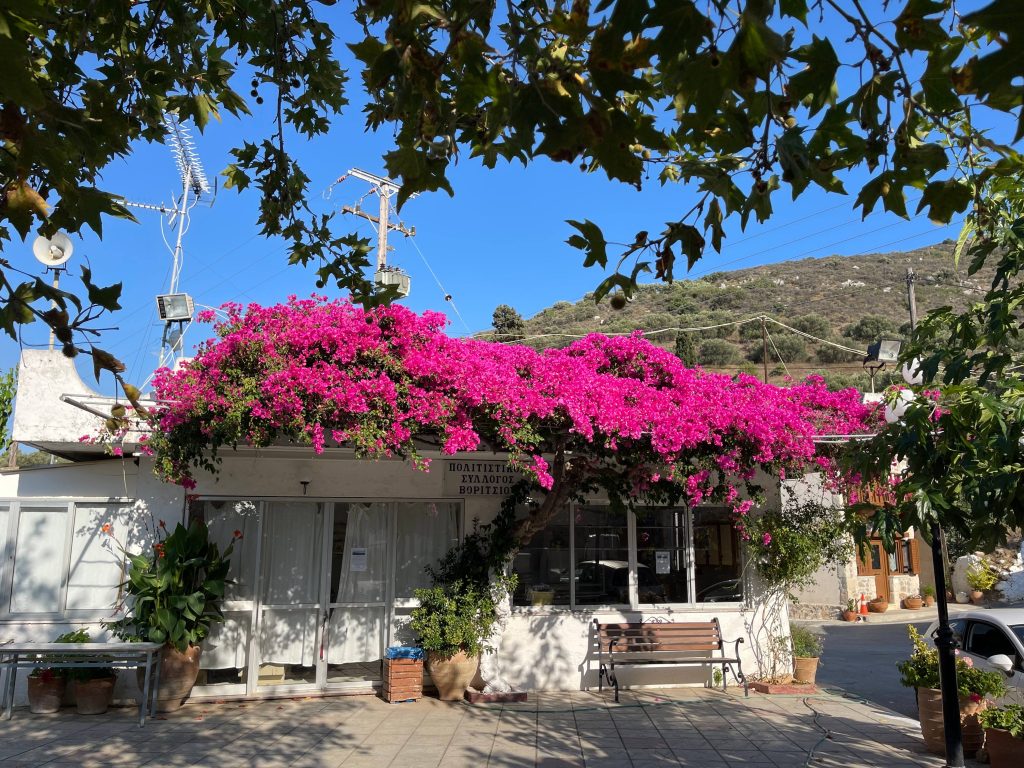
Mountain peaks with snow on Crete: The Ida is the highest mountain of Crete, with seven months per year snow! The way here through the mountains is really beautiful, with many abandoned churches and houses made of stone for the shepherds. But it is so cold up in the mountains! On our way back to Zorbas it gets hotter every minute. Arriving at the accommodation the temperature is 22 degrees with the sun shining. Time for a glass of wine by the sea.
Stories from Crete Greece – The abandoned village Aradena on Crete
The abandoned village Aradena: This village has been abandoned since the 40s. Aradena was abandoned after an argument between families in the village: the argument got out of hand and turned into a “vendetta”, with people getting killed. Most of the inhabitants then moved to the village Anopoli closeby. Recently though, some people decided to come back to the village. The small streets and a church from the 14th century are nice to see and you can even look into some of the abandoned houses. It gives you a good impression of how people used to live here.
At the edge of the village is a donkey path going down. This kalderimi was constructed to get from the village to the other side by donkey. It was a tough climb and descent to come here to the other side! Since the 80s the bridge Aradena was built, which makes reaching the village a bit easier. Around the village grow olive trees hundreds of years old, a sign of ancient prosperity. The view of the white mountain behind the village is fantastic.
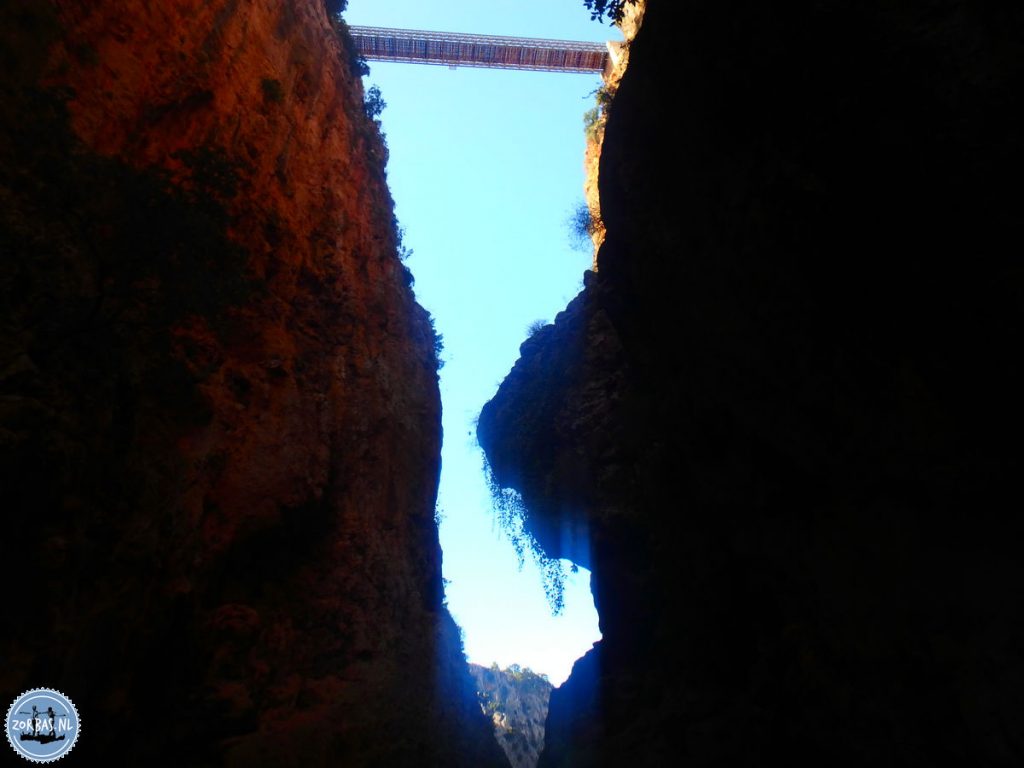
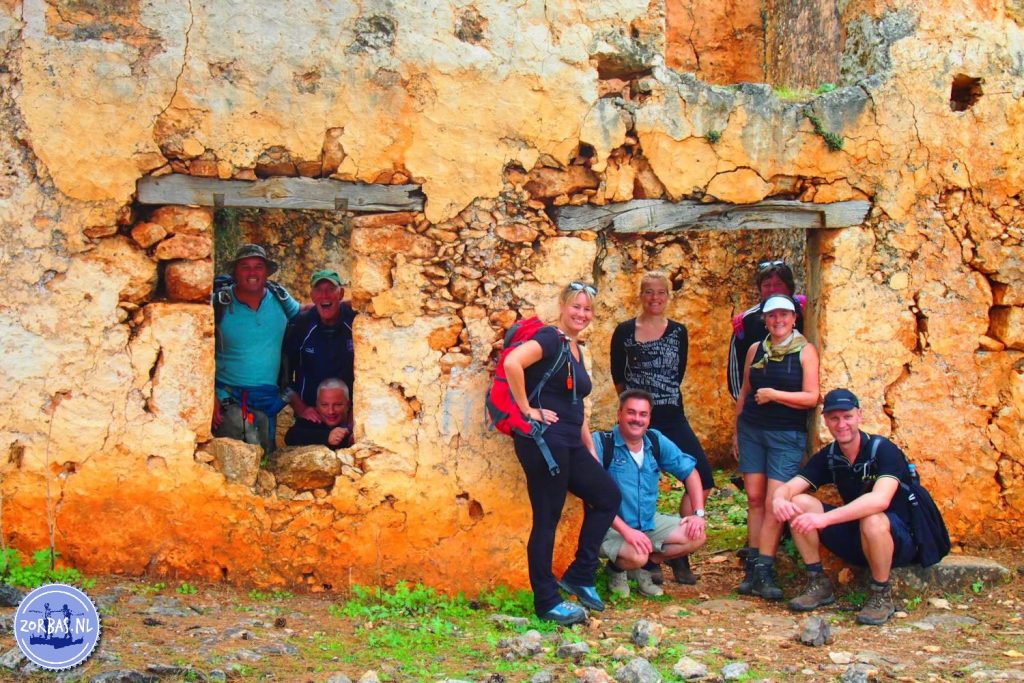
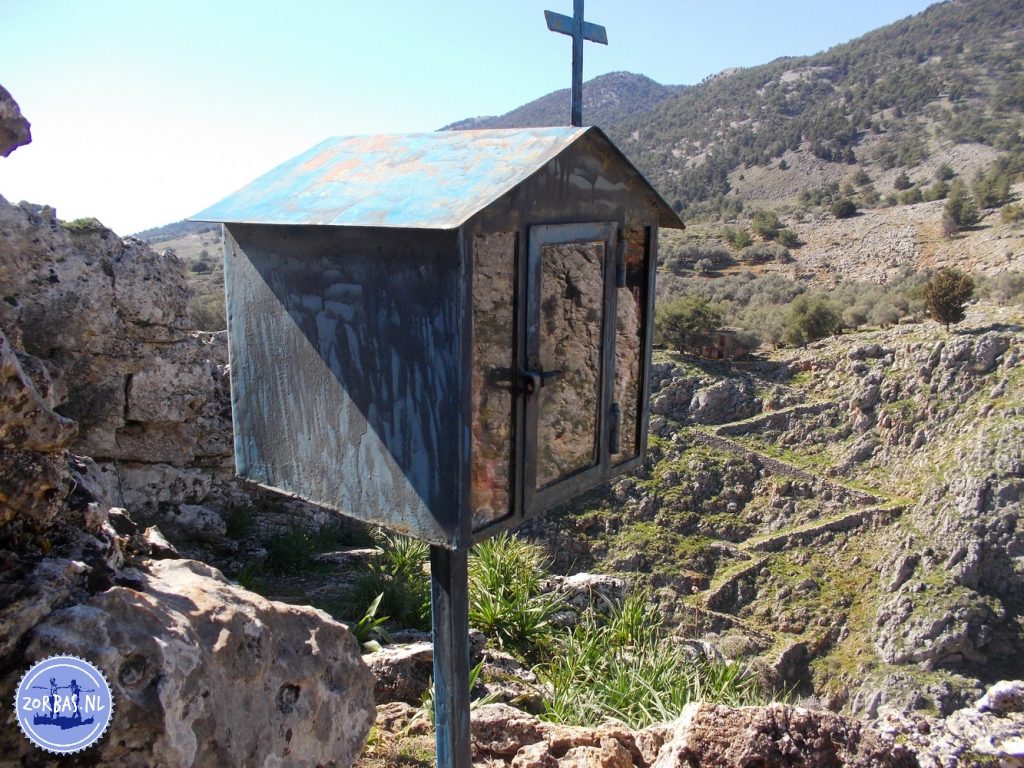
Old traditions – Carnival
Traditional Cretan carnival in Gergeri, Crete: The Cretan village Gergeri is close to Kato Zaros, high in the Cretan mountains. This village celebrates every year “Clean Monday” with a traditional carnival parade. This celebration is called “sarakosti”, which means Ash Monday or White Monday. On this day start the 7 weeks before Easter, when nobody eats meat or dairy products. During this celebration everyone eats fish, shellfish and salads. This Cretan carnival parade is very traditional: the villagers are dressed like sheep, complete with sheepskin and sheep bells.
The “sheep” are guided by the sheep shepherd. The main street of the village is closed for traffic. In the local taverns and kafenions the tables are full with wine, raki and traditional dishes. We celebrated our sarakosti in “To Koupouri”: a nice local ouzeri in the main street of Gergeri. The party starts every year at 12.00 hours. But we advise you to come earlier to the village. We started at 10.00 hours in the morning. At the village square they played fantastic Cretan live music with lira, mandolin and louta. Everybody is dancing to celebrate Clean Monday!
Ghost town on Crete – Kalami
A walk through a ghost town or abandoned village. This village walk ends up in the Cretan village of Kalami. In Kalami you get a good impression of how a village in Greece looked like in the 50s and before. The nature around the village is breathtaking and is accessible all year round. The village is surrounded by high cliffs and fields full with olive trees, flowers and little streams. Water flows through these streams until late in spring and many fruit trees grow here. We also walk through this abandoned agricultural area. We can make this walk as long as you wish, from 5 to 12 kilometres. Read more about this hike in South Crete.
Stories from Crete Greece – Olive oil and Raki, the first necessity of life on Crete
Crete at it’s best: Time to harvest! One of our nicest days is often the cooking workshop on Crete… together we enjoy the beautiful nature, pick fresh herbs, cook our favorite dishes and eat in the fields with olive trees. During these days, without exception, everybody will say: Your olive oil is so good!!! Again without exception we are thoroughly surprised when we hear what people pay for a liter of Cretan olive oil in Northern Europe; 18 Euro… a disgrace. Who gets that money? The Cretan farmer only gets 2 Euro a liter, so who makes so much profit? The importer? The exporter? The transporter? Or maybe the tax office? Those farmers that pamper their trees all year round certainly don’t…
Crete takes care of 6% of the worlds olive oil production. It is worldwide known as the best oil available because of the soil, the climate and the pampering, no other country can compete with that. Oh well, it is probably a transportation thing… Crete is too far away…. but the difference between 18 or 2 Euro a liter is a bit much for my taste. Some of the oil factories are expanding their business with adding a packaging industry, hopefully this will help to get the oil in stores at a better price in the future. We sincerely hope these cutting costs will benefit the farmer, they deserve it. In any case, the trees are full this year, so let us hope for a beautiful and fair harvest.
Harvesting olives
Harvesting the olives is a heavy job, those hills will break anybody’s back going up and down with heavy bags filled to the rim. Somewhere half November the harvest starts, the branches are carrying a hughe load of green Cretan gold. The fields look like ants nests, people are placing their nets under the trees, the olives are hit out of them by hand or mechanically, the nets gather with the olives after which they are put in bags, ready to go to the presses. After the harvest a lot of work still needs to be done: the trees need to be pruned and fertilised, the fields need to be irrigated while in the mean time the farmer needs to keep his eye out for bugs that could kill his olives. Plowing the land is even a law as to try and avoid forest fires.
It is a great experience to see how Greek families work together on their land to harvest their olives and an even better reason to visit Crete in winter. Especially November and December are busy harvest months. If you are visiting our beautiful island during this special time, please do not hesitate to go and have a look. You will see the famous Greek hospitality emerge if you are invited to join them for a bite to eat in the field. Everywhere in the mountains you will see campfires and bbq’s. Also please make a stop at one of the olive oil factories, they will be happy to show you around so you can see the entire process. A truly wonderful time to spend on Crete.
Off to a great harvest!
Olive trees on Crete: After the harvest of olives, the olive trees on Crete produce a lot of blossom during spring. In time, this blossom will turn into olives. The branches of the olive trees will be cut on the first day after the full moon. It is very important to cut the olive trees, otherwise the blossom will thicken and the olive tree will not give so many olives. The harvest of the olives is now done (2011-2012), only on some places the farmers are still busy.
The price of olive oil is much higher compared to other years, because the harvest of olives was not so good this year. Hopefully, we will have next year an excellent year to harvest olives on Crete. Most of the olive trees have been cut; the olive trees can have a nice rest until next year, when they will produce again the delicious olive oil from Crete.
Crete at its best, a greasy story
It is that time of the year again. Almost end of November, so…. the olives need to come of the trees. Our little island wouldn’t be the same without olives. All winter long my fellow Cretans work in their olive groves. Every family has olive trees, whether it’s 25 or 2500. These trees have been handed down from generation to generation and are therefore usually spread out over a couple of villages. At a Cretan home it’s olive o’clock all day long.
At every meal a bowl of olives is on the table, at Easter an olive branch is decorated, nasty smudges are taken out of clothing with olive soap, at Christmas mistletoes are made of olive twigs, every meal floats in olive oil and when you can’t go for a number 2 you’ll get a table spoon full of the stuff. Honestly, olives are the best invention second to the wheel. So, of course you’ll see olive trees wherever you go. Whether they are in big groves, on a little balcony 3 stories up in the centre of Heraklion or one all alone at the top of a rocky mountain, they’re everywhere. If scientists would take a real good look at Cretan DNA they would find some kind of chemical olive element. For sure.
Olive trees – A long history
It isn’t that strange. The olive tree goes 4000 years back on Crete; it was even the Greeks who introduced the tree to France, Italy and Spain. The tree itself doesn’t need a lot. A bit of sun, a bit of water, a soft winter and time. Lots of time. Only after its fifth birthday the little tree will start thinking about creating an olive, at its tenth birthday it’ll start to look like something. Only when the tree is a full-fledged grown up at 15, it will give olives to the max. In spring the olive tree is full of intoxicating white-yellow and white-pink blossom. Once these flowers drop to earth, the tree will start to make the fruit. The leaves are green all year round and breathe life into Crete’s landscape summer and winter.
How to take care of the trees?
To take care of the trees is a lot of work. The land needs to be plowed, the branches need to be pruned, vermin needs to be combated and trees need to be fertilized. The fertilizing is a nasty job, but at least there is enough fresh stuff to be found with all the sheep, goats and donkeys around. The really heavy work starts with the harvest. First job is to spread huge nets underneath the trees and just keep in mind these trees are not lined up neatly.
Most of them are on slopes that wouldn’t look bad in a black track skiing route. Then the machines are fired up. These machines consist of a hand held motor, weighing about 10 kilo’s, with 2 aluminum sticks on it. The farmers walk around with this machine all day, up the slope, down the slope. The sticks themselves have thick nylon threads at the end of them that turn at quite a speed gently knocking the olives of the tree.
Different ways of harvesting
These are the ‘motorized’ families, there are still many farmers doing it the old fashioned way: knocking the olives out of the tree by hitting the branches with wooden sticks. Again gently of course, a crushed olive gives less oil. At sunset the nets are gathered and the olives are put in to big jute bags and are brought to the oil factory. Depending on the size of the tree it takes about two trees to fill a bag weighing appr. 80 kilos.
When they’re lucky out of this bag they will get 12 liters of olive oil. Yep, that is no typo, only 12 liters. The income of this one bag would be 24 euro. Doing the maths this means a tree gives 12 euro, or 2 euro a liter. Amazing isn’t it. Especially if you figure in the fact that in Northern Europe a liter costs from 8 to 12 euro and isn’t even Cretan but of a much lesser quality.
I guess it’s crystal clear. Every liter of olive oil takes a hell of a lot of work and doesn’t pay the bills. Also clear: The oil Aphrodite used to bathe in and that Zeus became such a big boy on is from Crete. Most clear of all: Every drop is pure gold and that….. is Crete at its best!
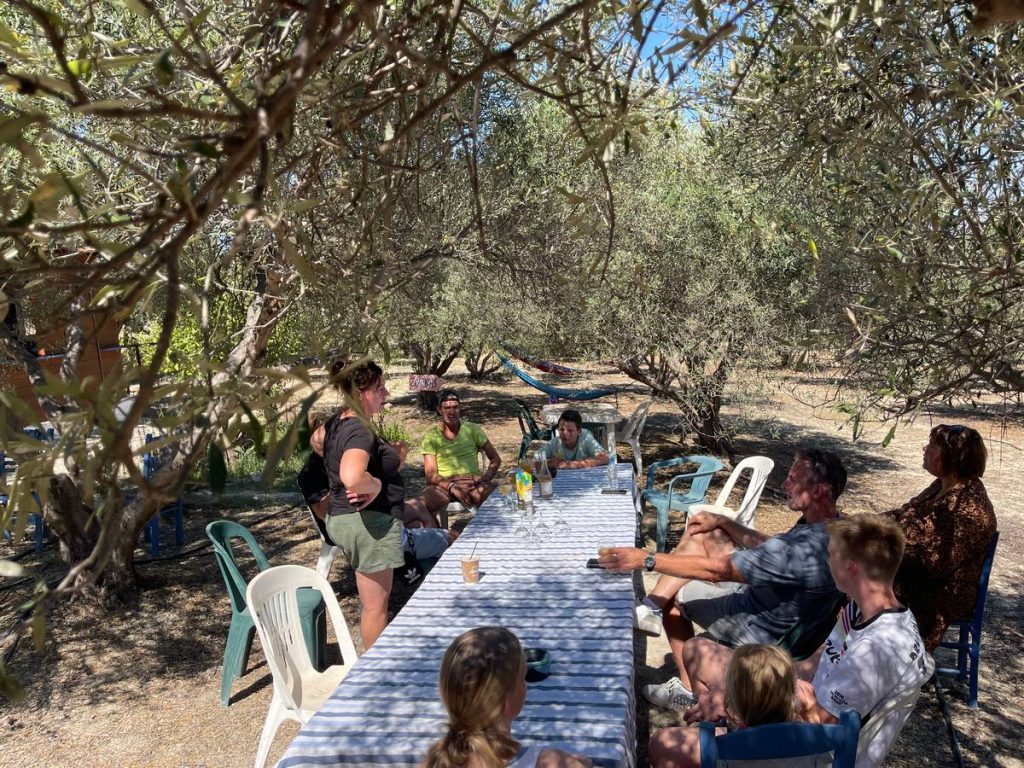
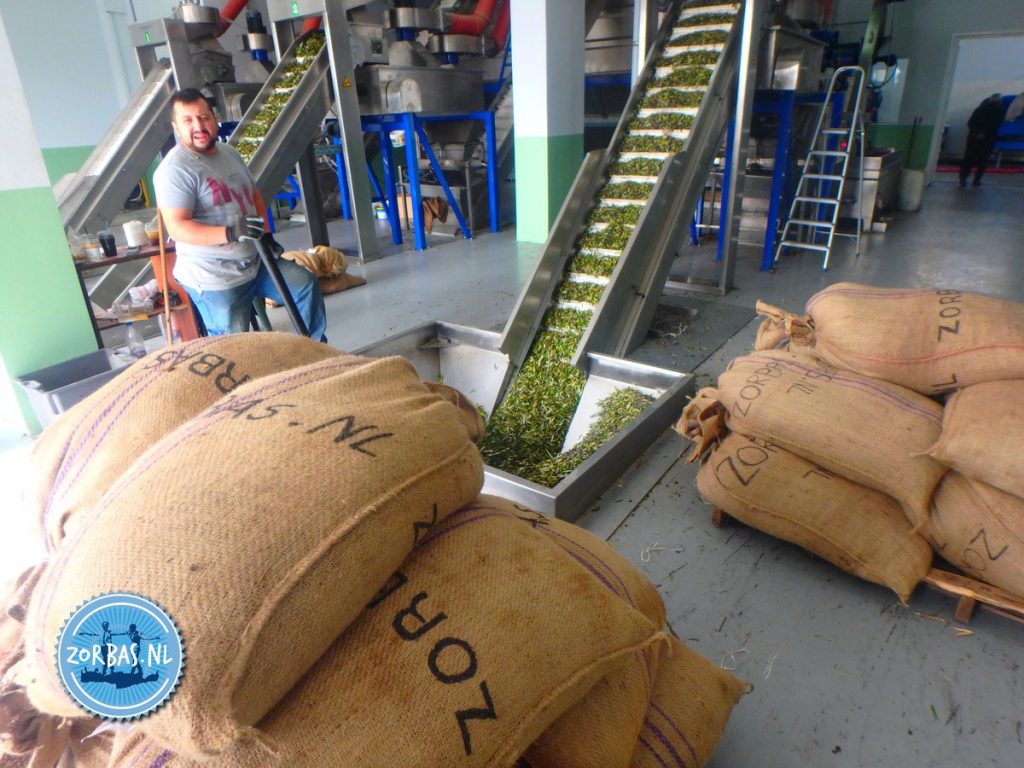
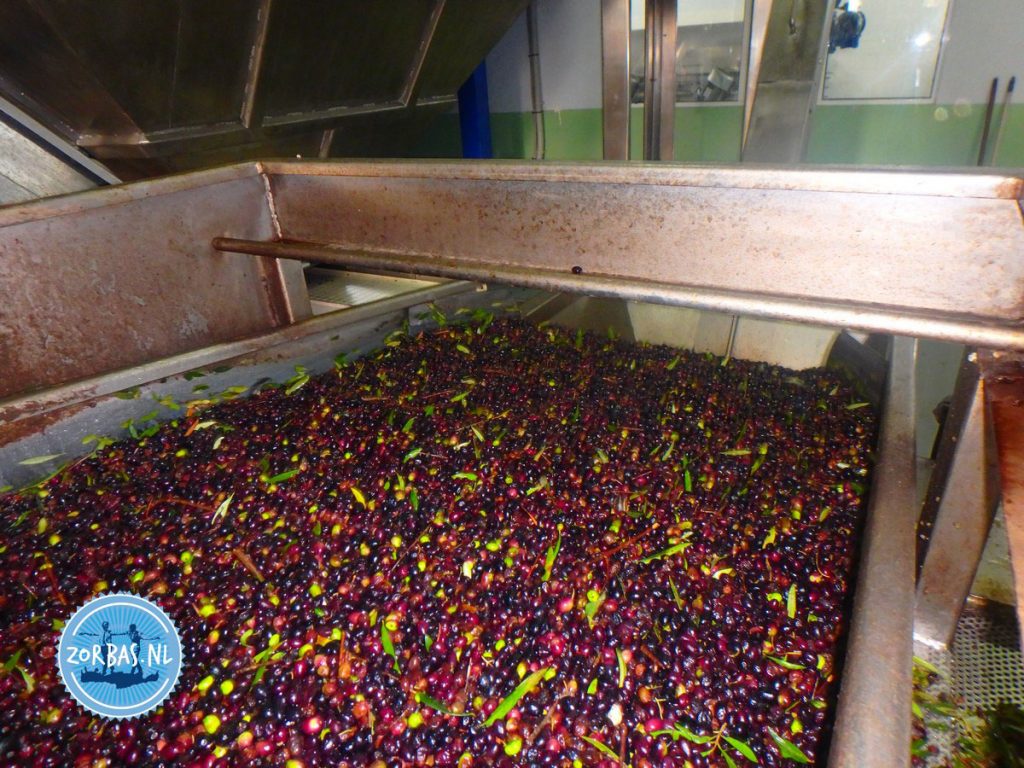
Ouzo? Raki!
Who says Ouzo, we want Raki: When you think Greece, you think Ouzo. According to the media it is the national drink of the Greeks. Wrong! Where the British drink the most tea per person, the Greeks drink the most…… whiskey. Didn’t see that one coming, did you. Now when you visit Crete, the story changes all together: on Crete we want our Raki. With a capital R.
It actually is very logical. After the barefoot pressing of the grapes to make wine, there are quite a lot of left-overs and throwing it away would be a waste. So, in the old days one would put all these grape left overs in a stone reservoir at full moon. On top a big heavy millstone would be placed to press the last bit of juice from the grapes. The next day this juice together with the totally squeezed skins would be placed in a barrel for 6 to 8 weeks to undergo fermentation.
Afterwards the barrel would be emptied in a big copper kettle in which the Raki would be distilled. From these times we have also inherited the ‘medicinal’ uses for Raki. Toothe ache? Rinse with Raki several times a day. Caught a cold? Rub the breast with Raki and keep warm. Catched a cold? Heat some Raki with a scoop of honey. Two of these glasses and you don’t even remember you are sick.
The distillation process
Nowadays the grape left overs are brought to a Raki distillery. On Crete we call this the Kazani, after the big copper kettle in which the brew is prepared. Almost every village has a Kazani. The owner doesn’t ask a lot for his work, part of the proceeds usually suffices. From the end of October till the end of December the Kazanis are open to process the grapes. The distillation itself takes hours and hours, but no worries, it is never boring. The whole family joins in. Friends usually pop-in as well.
The BBQ is lit and plastic bags emerge from cars containing potatoes to roast, olives, tomatoes, feta and, of course, meat to throw on the grill. From another car a Lyra or Louto will magically appear, Crete’s traditional instruments. The whole group will taste the ‘Protoraki’; this first Raki from the kettle is strong enough to keep an airplane up for quite some time. Better drink quick or it just might evaporate. Loud discussions will start about the quality of the drink. Grandpa Giannis had a better tasting Raki last year. Uncle Kostas thinks his is much better. Neighbour Manolis grabs the Lyra and before you know it you are in the middle of a big party. And you will just have to join in, no way out.
Everyone visiting Crete this time of year should honestly pop into a Kazani. The owner of the little factory will be happy to show you around and explain the process from A to Z. You will have to sit down and taste the Raki: good chance you won’t be home before midnight. It is what we call Cretan hospitality and a large piece of….. Crete at its best!
Stories from Crete Greece – Dolphins in the sea around Crete
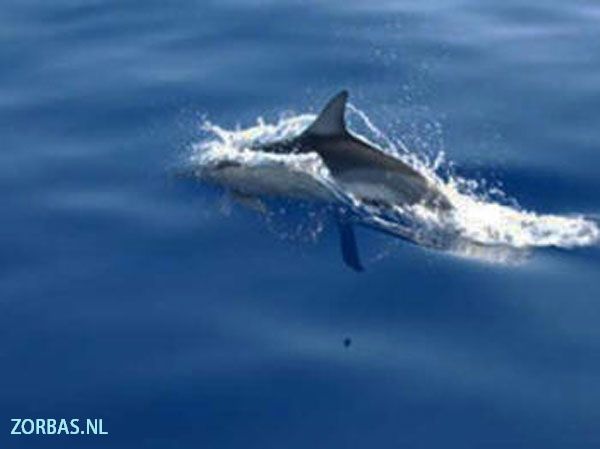
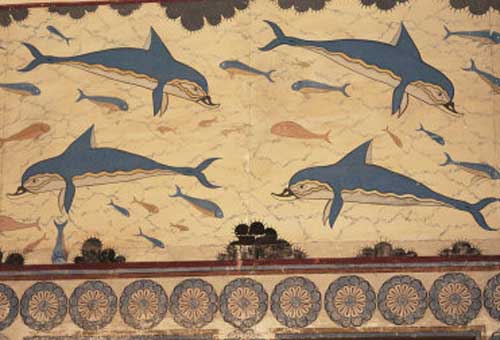
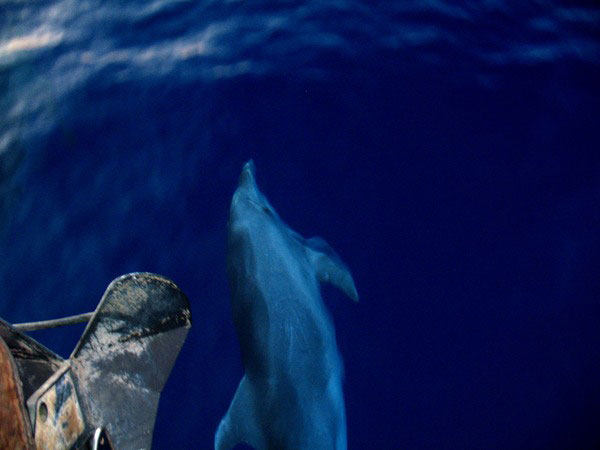
Dolphins around Crete: We take our guests on many boat trips and often we are asked if we are going to see dolphins? Yes, it is definitely possible, but we can’t guarantee it! There are dolphins in the sea around Crete, but you have to be lucky to see a dolphin. In the Knossos Palace are several old paintings of dolphins. Dolphins were seen more then 3.500 years ago around Crete! During the past years, we have spotted dolphins on several occasions. The most impressive, but also most frustrating time was during a diving session. It was a lovely day: not a lot of wind, a temperature around 28 degrees and a calm sea.
Unexpectedly, 10 to 12 dolphins jumped up in the air around our boat towards the diving location. All our camera’s and diving equipment were in the boat’s storage area, so we were not able to take pictures. This impressive scenery lasted about one minute, as if the dolphins wanted to show us: we are smarter then you, you are too late to take a picture! And we were….. It was a beautiful sight! Afterwards, we quickly went in the sea from our diving location, but we did not see another dolphin. The feeling of seeing so many dolphins at once was exiting!
Bad luck – No camera
On our way to Heraklion Airport, on the old national road, we once saw a lot of cars parked at the seaside. A large group of dolphins jumped up from the water for about 2 to 3 minutes, but you probably already guessed it: we forgot our camera!!
We were able to shoot some photos of dolphins during a boat trip to Dia Island. You really have to keep your camera ready during this boat trip! On a sunny day in June we could take about 3 good photos, but you need a bit of luck! Also this week we made some beautiful photos of dolphins. Hopefully, we are able to spot a lot of dolphins this year around Crete!
Stories from Crete Greece – Celebrating Christmas on Crete
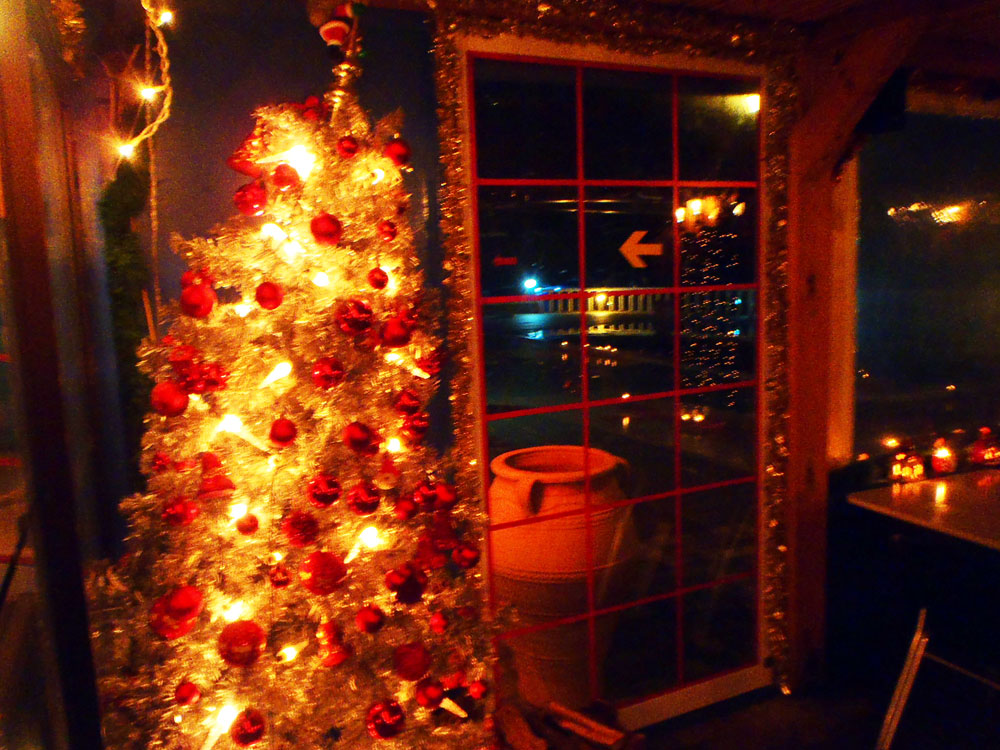
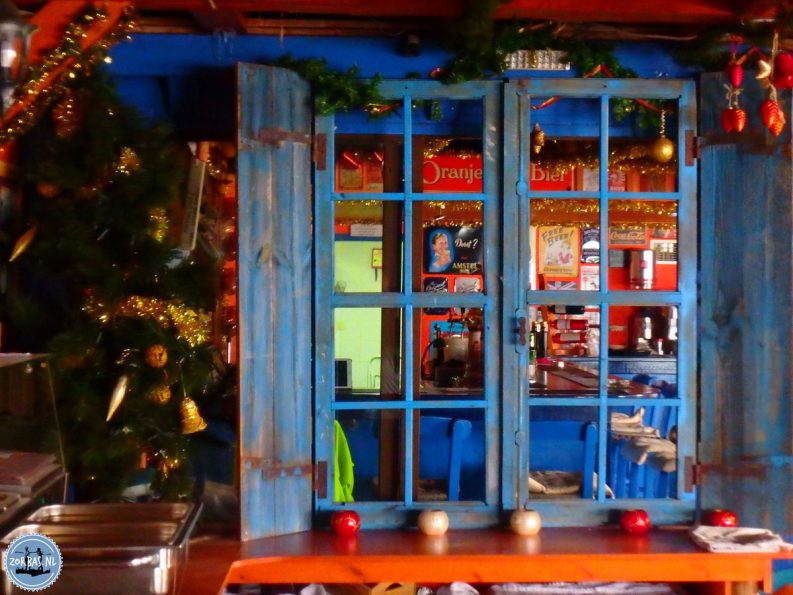
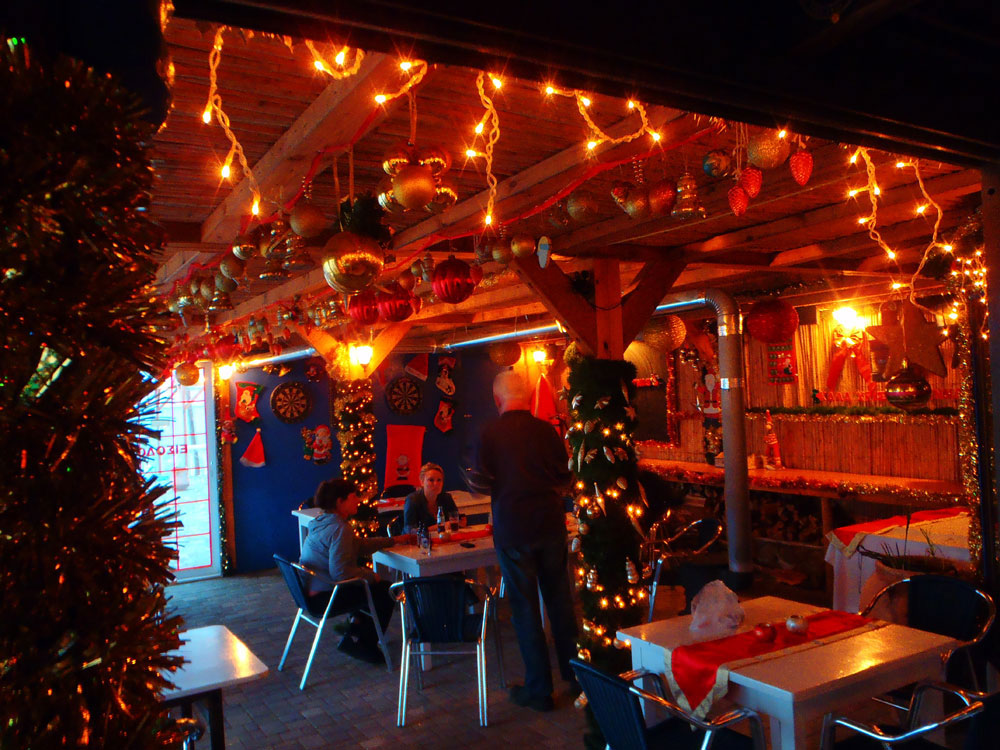
A Christmas Turkey Tale: Christmas on Crete has become a time of great joy. In the earlier days Easter was the most important holiday, but over the past 10 years Christmas has declared to be ready for the competition and is slowly but surely closing in on Easter, waiting to take over. The houses and villages on Crete are all decorated with festive lighting and Santas. Every village displays a nativity scene including the (often real) sheep, big enough to spend the night. The centre of the capital Heraklion is turned into a Christmas Wonderland with a huge tree, Christmas carols reverberating from every street corner and the most beautiful fairy-like lighting. A Christmas Fair is put up with a little ice rink, many live performances are showcased and they even display a reconstruction of Santas village. In short: Partytime!
Cretan families have started to celebrate Christmas more joyously as well. Because of this a befriended English couple decided to prepare a real English Christmas dinner. They invited about 20 guests, amongst them many Greeks. The preparation stress for our friend was immense. It just had to be perfect. She would, with all she had in her, serve her friends a true English Christmas. So, when friend Giorgos bellowed he would take care of the turkey, she accepted his offer with the speed of light, silently calculating the precious time it would save her. Ahh, what relief.
Turkey for Christmas
Christmas day started with an abundance of sunshine. The guests were invited at 2. Of course 2 o’clock on the dot, the non-Greek friends stood on the doorstep bearing small gifts. The Greek friends took a bit longer, but started to slowly trickle in. Except for Giorgos. Hmmmm. As time crept by, our friend started to become a bit frantic until finally at 4 Giorgos pulled up in his pick-up. In a loud voice he greeted the others and yelled “So where is the BBQ?” Barbecue….???
Flustered and in shock our friend looked around at her guests, until her eye peeked over Giorgos’s shoulder. Right behind him, wandering down the path, were 2 of the most beautiful turkeys she had ever set eyes on. Alive and kicking. The Christmas party went on till the early morning and was the talk of the town for many months to come. And the turkeys? Oh well, they had a great life in the backyard of our friends house until they succombed to old age. I am telling you, this is… Crete at its best!
Christmas and Newyear on Crete have become a wonderful celebration in more than one way. Newyears Eve has become an exceptional night with music, dancing, champagne and fireworks. Don’t feel like this years obligations at home? Come on over… and let us entertain you.
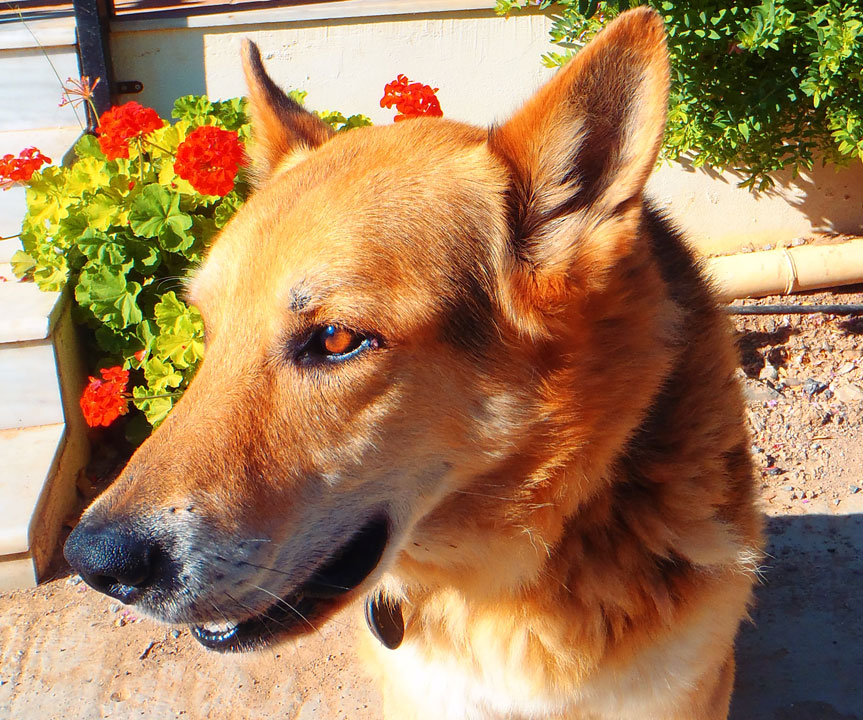
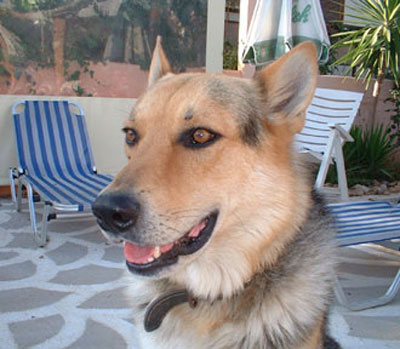
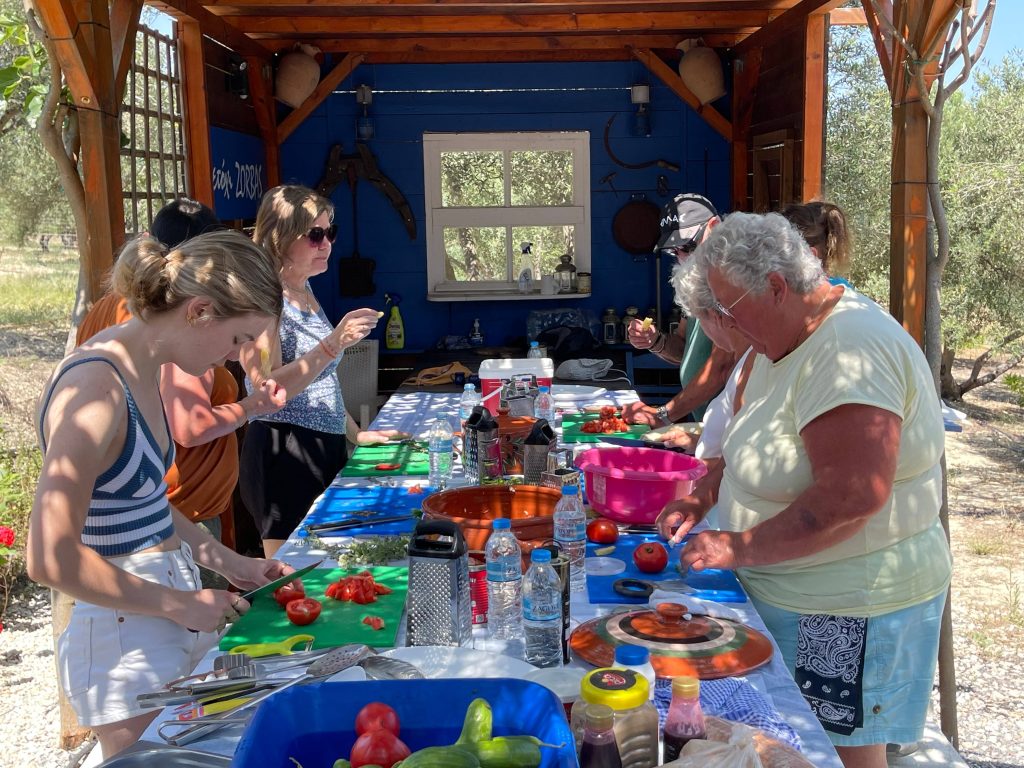
Pluto the dog
Pluto, our Zorbas dog, has passed away peacefully after 13,5 years of faithful service. For a shepherd dog it is a great age, but it is difficult when you have been through so much with a dog. He always used to be at the old Zorbas, the last 2 years he stayed at home. He was a striking friendly dog that kids could sit on and could play with. Pluto grew up with tourists and guests and was always friendly. Found as a small pup in 1999 but grown into a Zorbas icon! People used to first ask after the dog before they asked how we were. In 2003 he even got a medal for saving a 3 year old child of drowning. Commisioner Rex had already gone…. commissioner Zorbas was Pluto.
How many laps did he run around the pool, how many guests did he bring to their apartments? No idea, but it was many! People that were scared of dogs weren’t anymore after meeting Pluto. There have even been guests that got a Pluto tattoo! On the Zorbas photo board there will always a special spot for him. In winter you could leave for Heraklion in the morning and return at night: he would not have crossed the blue line at the old Zorbas, he always waited until you were home. This was a unique dog, a winning lottery ticket and for us irreplaceable. These are difficult times for us cause he remains Pluto Zorbas. Rest in peace!
More information
Holidays on Crete: Apartment rental and accommodation on Crete. This is the right address for family apartments and holiday homes, excursions and cheap flights to Crete. There is a detailed overview of the latest holiday news from Crete including many pictures. Crete is the most southern holiday island of Europe.
In case you like more information, please send an email to zorbasisland@gmail.com
Stories from Crete Greece
